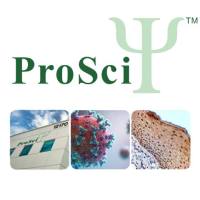Characterization of Wild‐Type Excitatory Amino Acid Ion Channel Receptors
互联网
- Abstract
- Table of Contents
- Materials
- Literature Cited
Abstract
The ubiquitous distribution of EAA receptors results from the fact that EAA?mediated neurotransmission is the most prevalent type of fast, chemically?mediated communication in the brain and spinal cord. Indeed, EAA?mediated neurotransmission is thought to participate in a host of physiological and pathological events including learning and memory, epilepsy, neurodegenerative conditions such as Alzhiemer's, Parkinson's and Huntington's Diseases, and the neurodegeneration associated with stroke and head trauma and neuropathic pain. Described in this unit are receptor binding assays for studying ion?channel forming excitatory amino acid (EAA) receptors in the mammalian central nervous system. One of the three major types of ionotropic (channel?forming) EAA receptors are the AMPA receptors, and the other two types are classified on the basis of the original agonists identified for these sites: kainic acid (kainate; KA) and N?methyl?D?aspartic acid (NMDA). Thus, the three recognized ionotropic receptors are the AMPA, KA and NMDA recognition sites. Like GABA receptors, the AMPA and NMDA receptors have multiple regulatory sites.
Table of Contents
- Basic Protocol 1: Measurement of [3H]AMPA Binding to Wild‐Type AMPA Receptors
- Alternate Protocol 1: Measurement of [3H]KA Binding to Wild‐Type KA Receptors
- Alternate Protocol 2: Measurement of [3H]Ligand Binding to Wild‐Type NMDA Receptors
- Support Protocol 1: Preparation of Membranes for Binding Assays
- Commentary
- Literature Cited
- Tables
Materials
Basic Protocol 1: Measurement of [3H]AMPA Binding to Wild‐Type AMPA Receptors
Materials
Alternate Protocol 1: Measurement of [3H]KA Binding to Wild‐Type KA Receptors
Alternate Protocol 2: Measurement of [3H]Ligand Binding to Wild‐Type NMDA Receptors
Support Protocol 1: Preparation of Membranes for Binding Assays
Materials
|
Figures
Videos
Literature Cited
| Literature Cited | |
| Enna, S.J., and Snyder, S. 1976. Influences of ions, enzymes and detergents on gamma‐aminobutyric acid‐receptor binding in synaptic membranes of rat brain. Mol. Pharmacol. 13:442‐453. | |
| Ferkany, J.W., and Coyle, J.T. 1983. Specific binding of [3H](±)‐2‐amino‐7‐phosphono heptanoic acid to rat brain membranes. Life Sci. 33:1295‐1305. | |
| Kaplita, P.V., and Ferkany, J.W. 1990. Evidence for direct interactions between the NMDA and glycine recognition sites in brain. Eur. J. Pharmacol. 188:175‐179. | |
| Krogsgaard‐Larsen, P., Ebert, B., Lund, T.M., Brauner‐Osborne, H., Slok, F.A., Johansen, T.N., Brehm, L., and Madsen, U. 1996. Design of excitatory amino acid receptor agonists, partial agonists and antagonists: Ibotenic acid as a key lead structure. Eur. J. Med. Chem. 31:515‐537. | |
| Lehmann, J., Schneider, J., Mcpherson, S., Murphy, D.E., Bernard, P., Tsai, C., Bennett, D.A., Pastor, G., Steele, D.J., Boehm, C., Cheney, D.L., Liebmann, J.M., Williams, M., and Wood, P.L. 1987. CPP, a selective N‐methyl‐D‐aspartate (NMDA)‐type receptor antagonist: Characterization in vitro and in vivo. J. Pharmacol. Exp. Ther. 240:737‐746. | |
| London, E.D., and Coyle, J.T. 1979. Specific binding of [3H]kainic acid to receptor sites in rat brain. Mol. Pharmacol. 15:492‐505. | |
| Murphy, D.E., Snowhill, E.W., and Williams, M. 1987. Characterization of quisqualate recognition sites in rat brain tissue using DL‐[3H]α‐amino‐3‐hydroxy‐5‐methylisoxazole‐4‐propionic acid (AMPA) and a filtration assay. Neurochem. Res. 12:775‐781. | |
| Murphy, D.E., Hutchison, A.J., Hurt, S.D., Willams, M., and Sills, M.A. 1988. Characterization of the binding of [3H]CGS‐19755: A novel N‐methyl‐D‐aspartate antagonist with nanomolar affinity in rat brain. Br. J. Pharmacol. 95:932‐938. | |
| Sills, M.A., Fagg, G., Pozz, M., Angst, C., Brundish, D.E., Hurt, S.D., Wilusz, E.J., and Willaiams, M. 1991. [3H]CGP 39653: A new N‐methyl‐D‐aspartate antagonist radioligand with low nanomolar affinity in rat brain. Eur. J. Pharmacol. 192:19‐24. | |
| Watkins, J.C. and Evans, R.H. 1981. Excitatory amino acid transmitters. Annu. Rev. Pharmacol. Toxicol. 21:165‐204. |


![N-[(1R,2R)-2-Amino-1,2-diphenylethyl]-2,3,4,5,6-pentafluorobenzenesulfonamide,1026785-12-5,阿拉丁](https://img1.dxycdn.com/p/s14/2024/0619/147/8020536585045633081.jpg!wh200)




